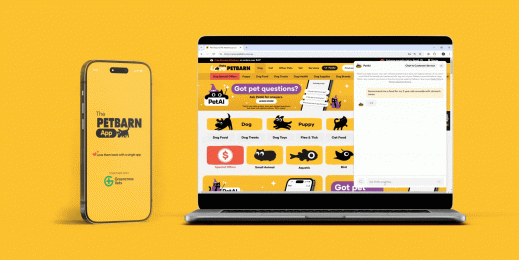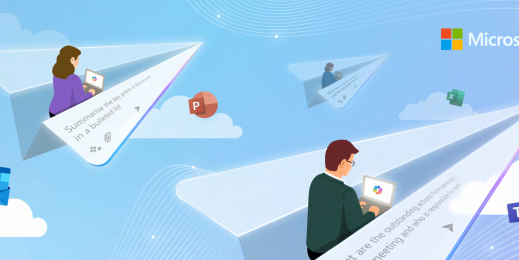
Telstra transforms firstline worker experience, improves customer support
Telstra has transformed the experience of its firstline workers, using Microsoft Teams and the Power Platform, to support its strategy to lead the Australian market by simplifying operations and product set, improving customer experience, and reducing its cost base.
By adopting Microsoft Teams and the Microsoft Power Platform, the company gave its field teams an updated, unified source of truth, broke down data silos, and brought field teams, office teams, and leaders together.
According to Richard French, Principal for Field Digitisation; “The lightbulb moment for us came when we realised what we could accomplish by combining our own knowledge and insights with Microsoft Teams and the Microsoft Power Platform. Suddenly, we had the ability to embed role-specific apps via Power Apps in Teams, alongside reporting from Power BI.
“Our field employees could access everything they needed to serve a customer in one place, accessible from any device.”
As Australia’s leading telecommunications company, Telstra provides mobile devices and services to 18 million customers and has a global presence across 20 countries.
In 2018, Telstra announced a new strategy to lead the Australian market. Part of this was a renewed focus on making sure employees had the tools and systems they needed to provide the great experience customers demanded from the company. The company’s field technicians have already begun to experience the positive impacts of this transformation.
Over the years, the number of resources created to support these technicians grew in line with the amount of locations they would have to visit to properly serve their customers. These resources included online spreadsheets, paper documents, and websites. Contact with office-based support personnel often happened via email, which delayed responses. Through communication with technicians, leaders quickly understood the need for a modern, mobile source of knowledge and communication.
Simplicity through collective innovation
Telstra’s constant focus on providing field teams with the tools they needed to serve customers and stay connected with each other shifted in 2018 following a company-wide adoption of Microsoft 365. Realising the potential of Microsoft Power Apps, leaders opened access to the solution. “One of the greatest strengths of Power Apps is how easy it is to use and create with,” says Nathan Backers, Senior Business Specialist in Telstra’s Field Digitisation Team. “Anybody can really do it.”
The first app the company built was an “issue and opportunity resolution system” called TIDE. Accessible by all field personnel, TIDE allowed employees to create tickets regarding issues mentioned to them by customers. Other employees could then click on the ticket to gain further perspective concerning the issue, add related comments they had received while on the job, and subscribe to the topic in order to receive updates regarding its status. Team leaders also had the ability to alter the status of the topic, marking it as ‘in progress’ when Telstra was working on a solution, or ‘complete’ when it had been resolved. After employees saw the potential impact of TIDE, many of them began creating their own applications. Six, then 12, then 20 apps were developed in quick succession, each addressing the most crucial needs of the employees who created them.
Seeing so many employees take the initiative encouraged leaders to further advance the process. The company established a team of developers, many of whom, like Backers himself, had field experience of their own. This team took the best applications and nested them within two master applications dubbed Team Leader Plus and Technician Plus. TIDE, for example, became a part of Technician Plus. Also nested in that app are functionalities regarding manhole inspections, employee-specific performance metrics, a news feed, a Telstra product catalogue that enables upselling opportunities in the field, and instructional video and podcast hubs. These role-specific applications aid in many of the tasks vital to field work and field management, giving employees a single location that delivers all the added features granted to their role through the Microsoft Power Platform. It also improves the customer experience, giving field technicians in-depth knowledge of the customer’s history when they arrive for a job so they can fix issues quicker.
During the development of these applications, Telstra also began adopting Teams. Using Microsoft Flow as part of the adoption process, leaders created 120 individual groups within Teams, each dedicated to a specific field team leader and the technicians they manage. Group-specific, start-of-week video meetings began to eclipse phone calls, encouraging collaboration and improving communication. “We saw employees who had, in the past, been happy to sit on mute during meetings begin to engage much more regularly,” says Backers. Many of Telstra’s field technicians work in remote locations and travel vast distances to keep Australians connected. Using Teams closed the distance between employees, bringing them together to celebrate successes and discuss issues.
“We use Microsoft Intune, so granting access to Teams through every employee’s company-distributed tablet device was a simple decision,” says French. Intune is a cloud-based service that focuses on mobile device and application management. By managing mobile devices in Intune, administrators can add and assign apps to specific user groups, manage permissions, and remove company data from misplaced devices.
With employee enthusiasm for both Teams and Power Apps on the rise, Backers embedded both Team Leader Plus and Technician Plus into Teams, along with reporting from Microsoft Power BI. “Our teams were telling us they wanted things to be as simple as possible, and that they wanted to spend less time on administration and more time aiding customers. Our technicians and team leaders could now look up all their administrative data, do all of their daily tasks, and view their reports from within Teams,” says French. “That’s when we saw the cultural shift we’d been engendering really take off.”
The first day that Telstra implemented its combination of Teams and the Microsoft Power Platform, more than half of its field technicians signed in to give it a try. What they discovered was a new level of access to company leadership and experts, all of whom they could rely on for support. “We have end users in channels with senior leaders, and you can see them having conversations together,” says French. “We’ve definitely broken down a few layers of management and brought groups together.”
The company’s Brain Trust group, which is made up of experts from across the company, took great advantage of Teams in order to provide timely, accurate feedback for active situations in the field. The group has had a tremendous impact on the company’s recoverable damages process, for instance. In the past, field workers would place a call to the company’s damages team, describe as best they could the situation at hand, and then receive instructions based on the team’s understanding of the information they received.
Today, technicians simply place a video call in Teams and show the expert the situation. Gathering their own situational observations in real time, experts can make better-informed decisions regarding the skills needed to fix an issue, and how to restore services quickly for customers.
Telstra also developed an app called Sherloc with Power Apps, which it uses to aid in damages investigations. Making use of Microsoft Flow, the Sherloc app guides technicians through a series of fact-finding questions, based on their preceding answers. Technicians can attach images of damaged equipment, which the app geo-tags and adds to the damage report. Reports generated through Sherloc are not only faster for field technicians to file, but they have cumulatively aided Telstra to protect its revenue stream from the damages inflicted upon company equipment by third parties. Today, Sherloc can be found alongside TIDE as part of Technician Plus.
Telstra is at the heart of technological change and prides itself on having some of the best minds in the industry, people who are passionate about Telstra and technology, and who work together to achieve great things. Part of that is using the tools and products available to help people connect and create better employee experiences—and often there are employees within the company who have the insights and passion to make that happen. “You just need to look and you’ll find bright people in your organisation who want to create something impactful for you, and you’ll see the rewards of giving them those tools very quickly,” says French. “I’d encourage any company interested in increasing collaboration and communication while reducing costs to take a serious look at Microsoft Teams and the Microsoft Power Platform.”
For Telstra, Backers was one such employee. He began his career as a field technician, rose to a leadership role, and then used that experience to propel his career further by aiding in the design of the company’s applications, along with pioneering the incorporation of those applications within Teams. “At the end of the day, what we have now is great, because it was created by employees invested in solving these problems for their co-workers,” said French.
















